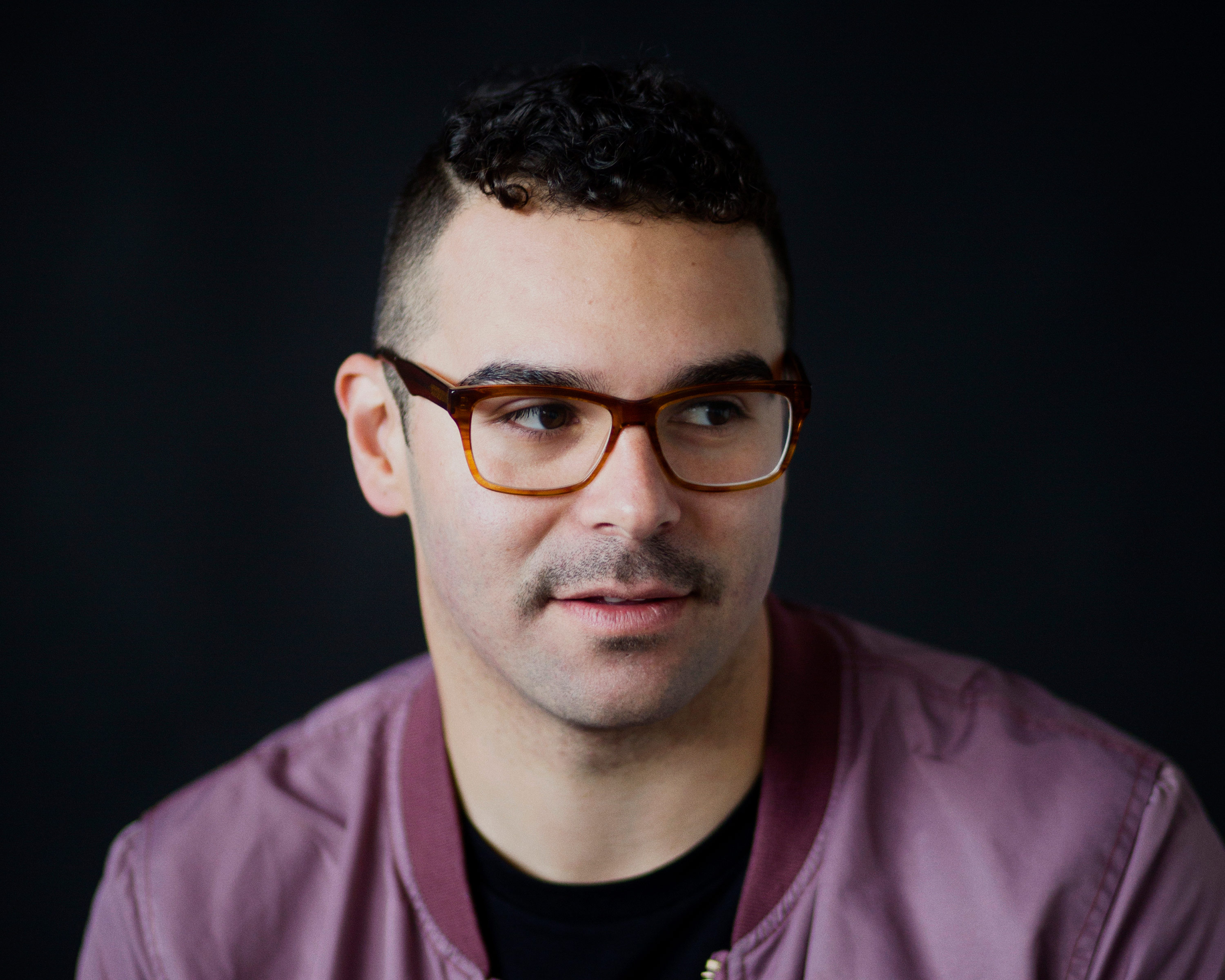
- Interview by Tammi Heneveld November 17, 2015
- Photo by Margaret Jacobsen
Adam R Garcia
- designer
- entrepreneur
Adam R Garcia is a designer and creative director whose work spans design, illustration, branding, packaging, event coordination, and gallery exhibits. He studied graphic design at Minneapolis College of Art and Design and worked in a variety of design positions before opening his Portland-based studio, The Pressure, in 2012. He has collaborated with a range of clients, from Nike to Fast Company, Nickelodeon, Target, and even Kanye West.
Describe your path to what you’re doing now. I grew up the only child to a single mom who worked a lot. My mom was a semi-professional billiards player, and she brought me to tournaments in dirty bars and smokey pool halls around Rochester, Minnesota. I had to sit and entertain myself until she finished competing, so I drew constantly.
As a kid, I was enamored with storytelling and world-building. It started with Super Mario Bros. when my mom saved enough money to buy me a Nintendo for Christmas. Soon after, I started reading comic books, which is how I learned about the tabletop role-playing game, Dungeons & Dragons (D&D). My aunt bought me the D&D Red Box when I was in 5th grade and my cousin, Nick, who lived in the trailer park across from mine, came over to play with me. We got all of our friends from school to play, too. The world of role-playing that I found in comic books, tabletop games, and video games was everything to me.
When I was in high school, my mom lost her job. We had to go on welfare and live in Section 8 housing. It was pretty tough, but she shielded me from a lot of it and generally kept an optimistic outlook. She enrolled in medical school in the Twin Cities area to become a doctor, so we moved there shortly after.
In Minneapolis, I discovered the independent hip-hop community, which was an incredible new DIY culture of creativity that resonated with me in the same way that Dungeons & Dragons had. A lot of the people I met were relatively disenfranchised and impoverished, which I related to, so I immediately integrated myself with them. I fell in love with hip-hop dancing—I do a funk style form of dance called “popping”—and felt inspired and excited to try new things. People saw that I had some kind of talent and embraced me even though I wasn’t that good.
Around that time, I started writing graffiti as part of a crew. Graffiti taught me to look at the world in a totally different way. Most people navigate cities by thinking about how to simply get from point A to point B, but graffiti artists move through cities differently. They climb things, go down alleys, hop onto dumpsters, jump on ladders, hit windowsills, and pull themselves up to places out of reach for normal people. They not only look at what materials or surfaces might hold ink or paint better, but think about how the structure of the environment—pipes, electrical boxes, cords wrapped around poles, or fences—might fit into a piece and allow it to ride longer.
A sign painter and artist named Stephen Powers wrote a book called The Art of Getting Over: Graffiti at the Millennium, which is about the history of graffiti and the people who were killing it at the time. He looked at it from a graphic design perspective and became famous outside of that world because he had a different and unique viewpoint of what graffiti could be. Normally, it’s all about getting up or merely writing your name somewhere. But Stephen argues that it’s really about getting over: hitting hard-to-reach spots, literally and figuratively, being different, and becoming known for your unique style. Powers became a king because he straddled that line between winning at the game of graffiti and reaching a massive audience of people outside of that subculture. He was smart, kind, generous, and insanely talented—that’s what getting over is. I think about that a lot.
There was a huge DIY aspect to Minneapolis’ indie hip-hop culture, so graphic design and illustration became part of everything I did. The first time I realized the power of design was in my high school graphic design class. I had to make a bumper sticker. At the time, I was in a dance crew called Battle Cats, so I made a bumper sticker that read, “Battle Cats!” It was black and white title case Times New Roman. It was simple and looked like a newspaper headline. I liked the idea that it might somehow infiltrate a wider audience. When the stickers were printed, my friends and I put one on the back of my mom’s 1992 Toyota Tercel. One day, while she was driving around by the mall, a bunch of dudes leaned out of a car and started honking and yelling at her, “Yeah! Battle Cats!” My mom came home and said, “Hey, all these guys freaked out about your bumper sticker today.” And I thought, “Graphic design works!” (laughing)
When I graduated high school, I decided to explore creativity through a graphic design lens. I attended the Art Institute of Minneapolis off and on for two years to study design. After that, I went to University of Minnesota for creative writing, but flunked a couple classes because I was so busy with dance. We practiced, performed, and toured all of the time, and I loved it so much that I called into work. I said, “Hey, I know I’m supposed to come in this weekend, but I have to go to a battle in Cincinnati.” And they said, “You know you’re fired, right?” (laughing)
Around 2000, I bought a shitty PC and started teaching myself how to use Adobe Illustrator and Photoshop. I began making fliers for shows and designing record covers for friends. At one point, I did illustrations for a music magazine called Lost Cause until it ironically went out of business a year later. I eventually started working at a CD manufacturing company called Noiseland, where I designed album covers and CD packaging. I also worked a lot of restaurant jobs to help pay for college.
From 2003 to 2006, I attended MCAD to finish my graphic design degree. While there, I continued doing a lot of illustration and design work outside of school and started working with the independent hip-hop record label, Rhymesayers Entertainment. When I graduated college, I became an art director and worked at Rhymesayers for eight months. After that, I moved to Philadelphia to work at an agency called 160 Over 90.
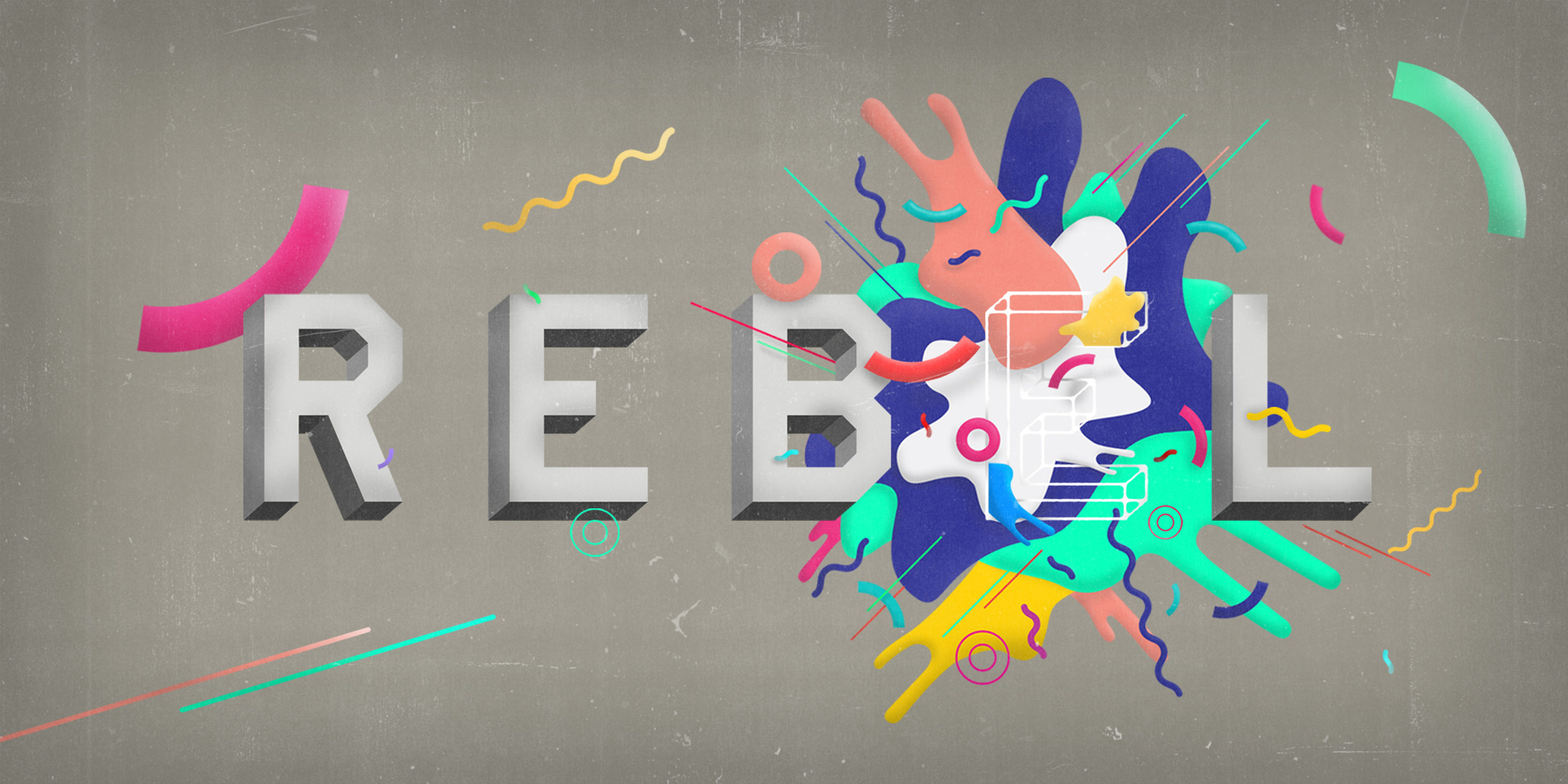
“The Pressure is basically a platform for doing all the things I’ve wanted to do since I was dancing, rapping, and making art as a teenager…It’s about engaging people in the community, becoming inspired, and passing that on in a tangible way.”
What led to you leave Minneapolis for Philadelphia? Did 160 Over 90 offer you a job and ask you to relocate? Well, that and I was going through a horrible breakup. I had lived with my girlfriend, but we broke up, so part of the move was me fleeing the city. But my main excuse was wanting more experience. I still love Minneapolis, but I had become such a part of the city that I needed to do something new. I started looking for jobs in places like Chicago, New York, and Philly before getting hired at 160 Over 90. I actually got to work with my bud, Mikey Burton, while I was there. He and I sat next to each other in the studio and had a lot of fun. I worked as a designer at 160 Over 90 from 2007 to 2009, and it was a great experience. At the end of 2009, I was offered a job at Nike and moved across the country to Portland, Oregon.
What did you do at Nike? I was a graphic designer at Nike Sportswear/Footwear, which is product design. I had zero product experience and didn’t really know what I was getting myself into, but I worked on really fun projects with insanely skilled product designers. That’s where I learned how to tell stories through every single decision: color, texture, material—there was a reason for everything.
After a year and a half, I moved to global brand design, which is the opposite of what I had been doing. In product design, I worked on a single shoe or product for anywhere from four months to two years. In global brand design, I told the stories around those products, shaved everything away to the main talking points, and created strategic marketing communication.
I continued working at Nike for eight months, but toward the end of 2011 I became more excited about the things happening outside of my day job. Since 2005, I had been using the name, The Pressure, as a moniker and had continued freelancing on the side while I worked at agency jobs. I saw all of my Portland friends who inspire me—Jason Sturgill, Kate Bingaman-Burt, Will Bryant, and Always With Honor—doing cool things on their own. Part of me was already doing that outside of Nike, but I wondered if there was a way I could do it full-time.
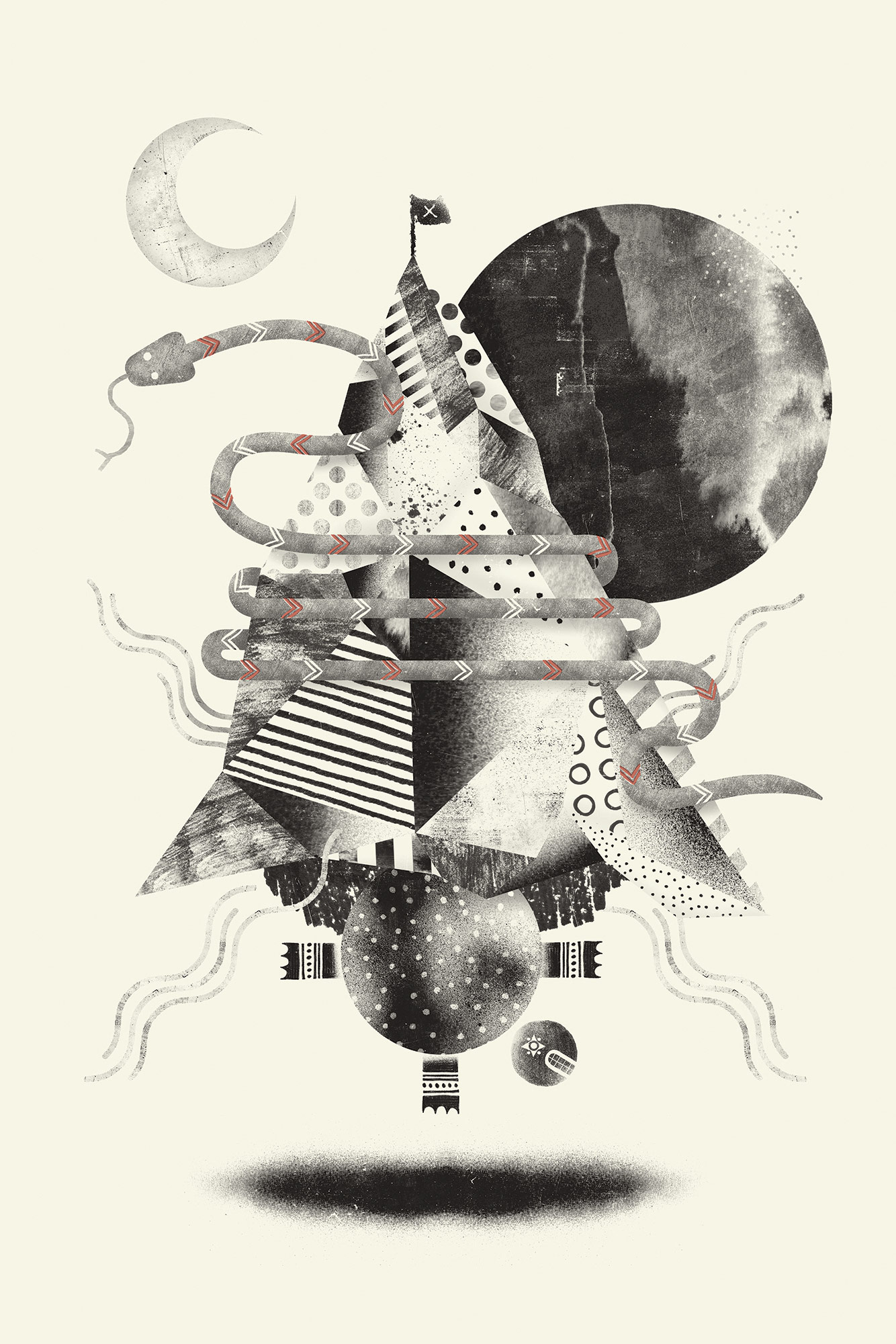
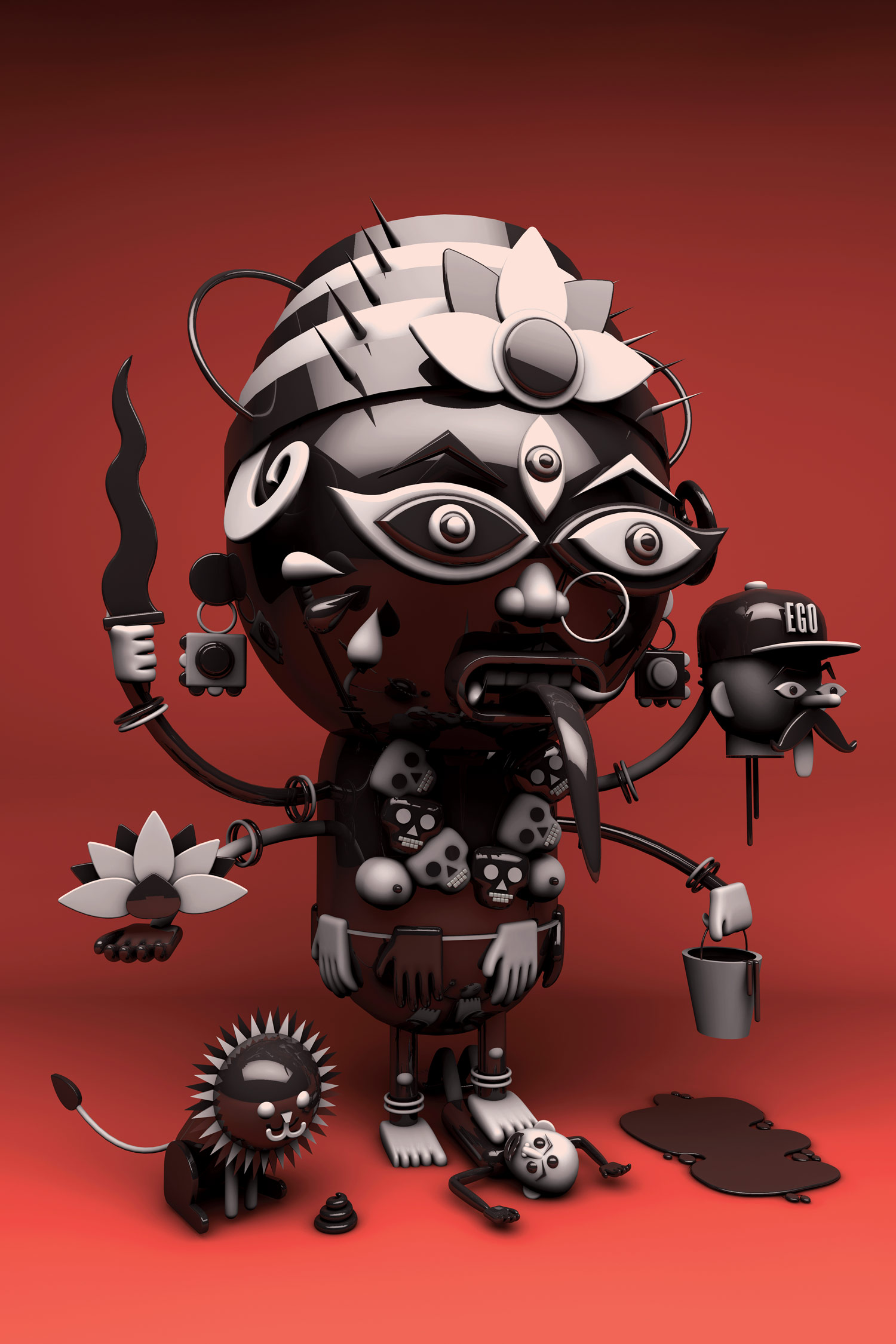
What made you feel like it was the right time to make the leap to freelancing full-time? I was nervous, but I figured I’d give it a try and see what happened. My job at Nike was good—the salary was dope and the benefits were fantastic—but I wasn’t worried about leaving that behind because I hadn’t ever had that before. I hadn’t ever known what it was like to feel comfortable, so maybe I feared complacency. I just knew I needed to get out, so I left.
I worked from home for most of 2012 before I found a space in a converted storage room in the basement of a building downtown. Later that year, I landed a job for Nickelodeon to design the 2013 Kid’s Choice Awards logo and branding. I knew it’d be good to have help on it, so I hired Anton Pearson, a friend from MCAD. He came to Portland for a few weeks and crashed on my couch while we crushed out hundreds of logo variations for Nickelodeon. It worked out, and a year later I hired him full-time. In 2013, we moved upstairs into our own studio space, which is where we are now.
The Pressure is basically a platform for doing all the things I’ve wanted to do since I was dancing, rapping, and making art as a teenager in Minneapolis. It’s about engaging people in the community, becoming inspired, and passing that on in a tangible way. I’m now at a point where my client work and personal projects feed into one another, which is nice.
Now that you’re leading your own projects, does your process come pretty naturally, or do you find yourself fighting against creative block at times? The other night I was working on an icon set. I had 12 icons laid out and had already worked on them for a couple of hours. I was starting to feel tired. I looked at one of the icons, and it was so stupid—it was the most literal, cliché, low-hanging fruit icon. I wanted to quit, but then I thought, “Wait, I just started. Come on.” I could have claimed that it was creative block, but, instead, I moved on to the next icon. I had a realization and suddenly the collection made sense. It’s a fucking process: you keep going and work through it. You leave, take a breath, go for a walk, do some jumping jacks, masturbate—whatever you need to do (laughing)—and then get back to it.
I’ve been reading a book called Daily Rituals: How Artists Work by Mason Currey, and he references a famous author who sat at his desk and worked for eight hours straight, even when he had zero ideas. When he literally had nothing to say, he wrote anyway. That idea really stuck with me. I imagined that dude at his desk like, “This is what I do.” It’s like panning for gold.
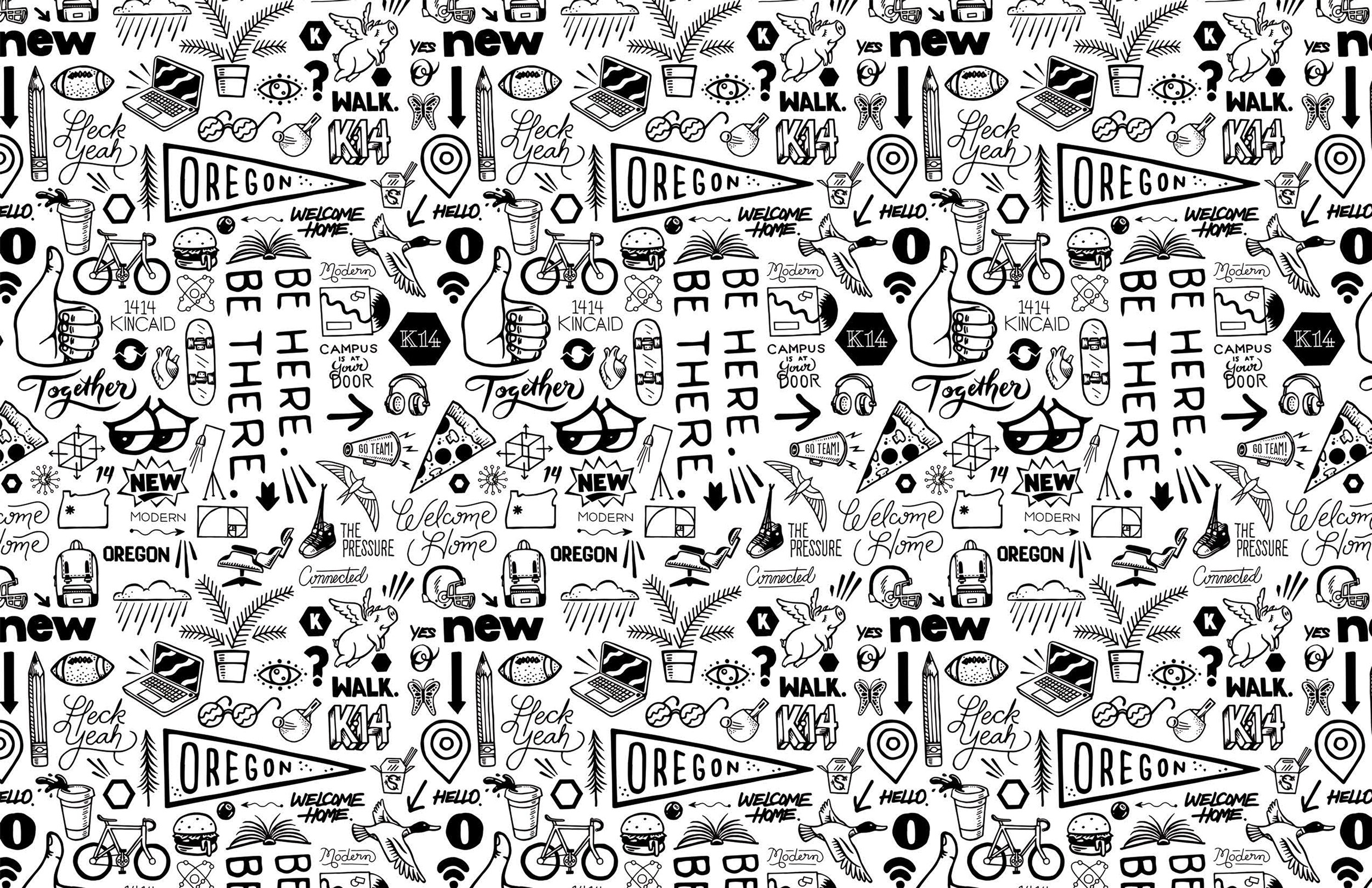
“It’s a fucking process: you keep going and work through it. You leave, take a breath, go for a walk, do some jumping jacks, masturbate—whatever you need to do—and then get back to it.”
Have you taken any big risks to move forward? The biggest risk was hiring someone full-time and paying them a salary. There are companies with thousands of employees, but, for me, going from one human to two humans was a huge risk.
Do you think there’s an inherent connection between risk and creativity? Yes, but creativity is a big, blobby word that can mean a lot of different things. I believe that everyone is creative: we are humans because we use tools and language and have the ability to create. I believe there can be creativity without risk, but risk enables us to reach beyond, step over, stretch, and see through boundaries of possibilities as human beings.
Are your family and friends supportive of what you do? Yes, but my mom doesn’t really know what I do because she had a stroke in the early 2000s. Part of the reason she went to med school is because she wanted to show me a better life. We were poor when I grew up, and she felt like she had been a bad mom, which wasn’t true. She had a stroke after graduation, right before she was supposed to start her residency. She’s been in a foster home ever since. She doesn’t have a strong memory, so she doesn’t really know where I live or what I do. She does know I’m a designer, but sometimes she asks me, “Are you still doing rap shows?” It’s tough, but she and I have been incredibly close my whole life, and she has always been supportive.
Do you feel a responsibility to contribute to something greater than yourself? Absolutely. We like to work with local businesses and nonprofits. We’ve been working with a children’s literacy organization called Start Making A Reader Today (SMART), which has been really cool. We also just started working with an organization called the Committee of the Elimination of Discrimination Against Women (CEDAW), which is a UN-funded initiative that we’re going to be doing branding and communication for. I’m super excited about it. As a studio, we like to contribute by putting on events like The Amazing Stumptown Spelling Bee, DJ nights, fundraiser shows, and dance parties. We enjoy engaging the city in whatever ways we can.
Something that probably sounds minuscule, but really matters to me, is responding to people who send me emails asking for advice or feedback. I’ve heard of other designers or studios being like, “Sorry, we’re too busy,” but I try to do all that I can to talk to every single person who reaches out.
I’ve also done some teaching, which I hope to do more of in the future. When I left Nike, I expressed interest in teaching at Portland State University School of Art and Design to Kate Bingaman-Burt, and she asked, “When do you want to start?” A couple months later, I was an adjunct faculty member teaching a class called Contemporary Design Projects. It’s a senior thesis course built on a foundation of collaboration and participation. Kate created the syllabus along with Frank Chimero, and I changed it a little to work more one-on-one with students. I encouraged the students to use individual interests as a lens to create projects with a participatory element. Everything had to be real. For instance, if someone said, “I want to make a zine,” I’d ask them to try to actually publish one. One young lady had always wanted to do a gallery show, so I told her, “By the time this class is done, you have to show work in a real gallery.” She was incredibly intimidated, but during the last week of class we all went to her show, and it was amazing.
Are you creatively satisfied? Yes and no. I don’t think I’ll ever be satisfied, but I’m not necessarily searching for satisfaction. For instance, 10 years ago, my dream was this: to have a small studio and do the work I want to do. But now I’m figuring out what the next step is for The Pressure as a whole. I don’t have kids, but I have employees, so I have a responsibility to other people now. It’s not all about me and what I want anymore.
I’m happy, but I want to do so much more, and sometimes I’m not sure if that’s graphic design. I would love to throw a festival or other event at the community level. We just did branding and sound design for the Core77 conference, and we recently did a fundraising event called Forwords. I think the next step might be creating a space that is an extension of our studio—one that could be used for retail, workshops, a gallery, an abstract event space, music shows, or whatever weird, experimental party we want to have.
If you were to give advice to a young person just starting out, what would it be? Everybody’s situation is totally different, but doing work is key—don’t ever stop doing work. Put your stuff out there. Reach out to those you admire. Collaborate with others. Don’t be a dick, don’t complain, and don’t blame others for your own bullshit. We’re pretty lucky to have the opportunity to do this stuff at all. The universe owes us nothing.
How does living in Portland influence your creativity? I’ve lived here for about six years, and Portland is amazing. There are things that can happen here that definitely do not happen in other cities. The open-mindedness, liberalness, and community-based culture makes it easy for people to come and create and feel accepted. It’s also kind of a sleepy town—it doesn’t have the same pace as LA, New York, or even Minneapolis. People from those places who hustle all of the time and constantly move don’t always work well here. I thought I was going to be here for a year and then leave, but I stuck around because I fell in love with it: the neighborhoods, the energy, and the people.
“Put your stuff out there. Reach out to those you admire. Collaborate with others. Don’t be a dick, don’t complain, and don’t blame others for your own bullshit. We’re pretty lucky to have the opportunity to do this stuff at all. The universe owes us nothing.”
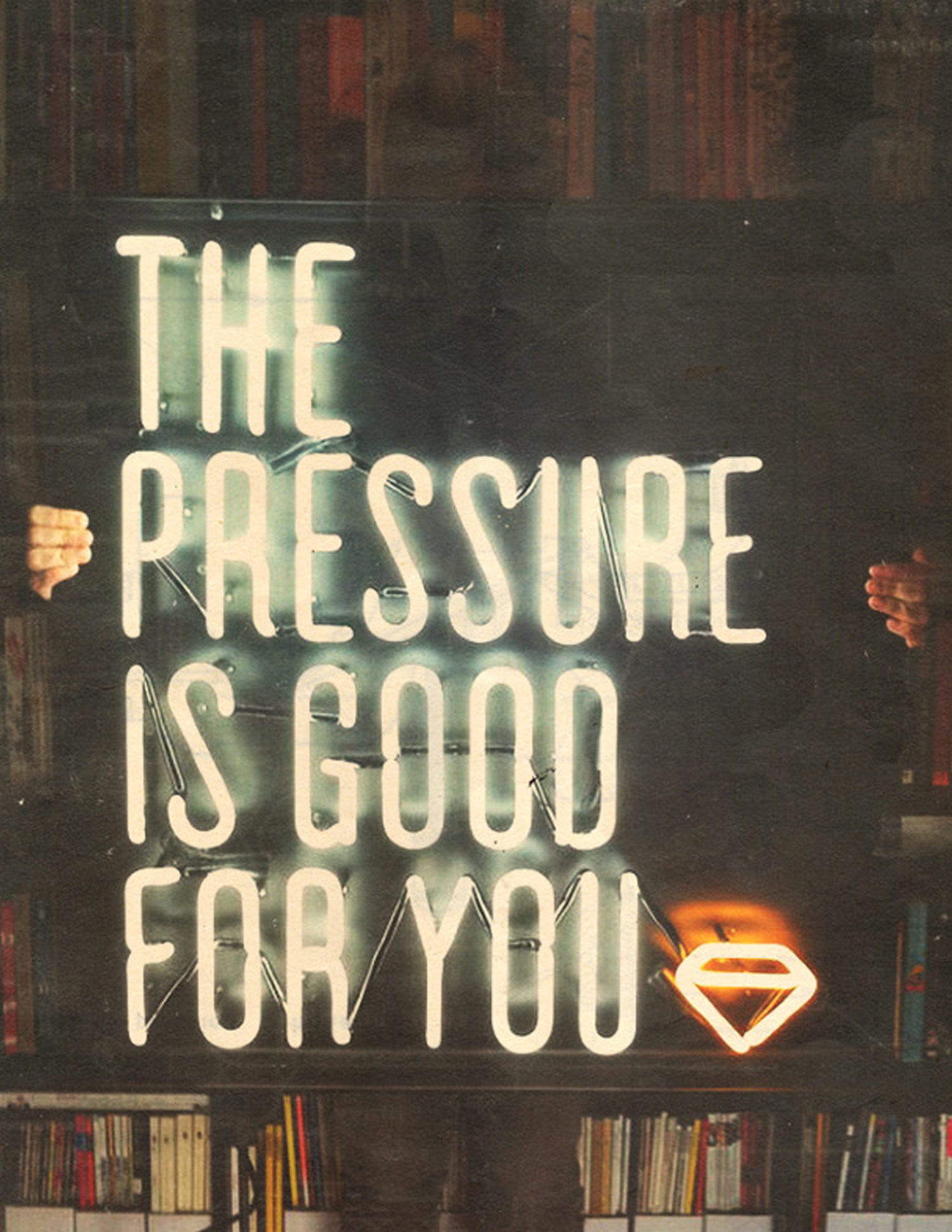
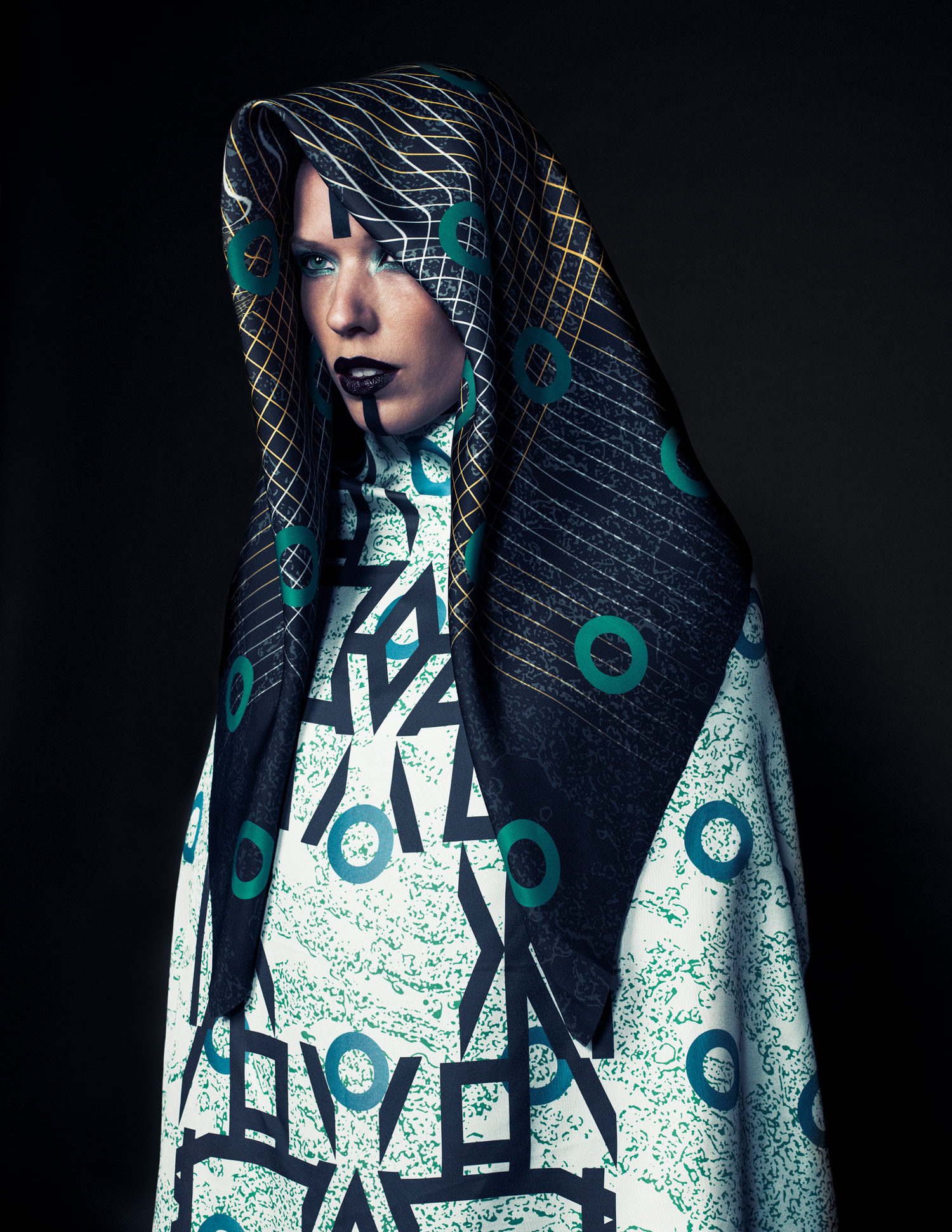
What does a typical day look like for you? I wake up around 6am or 7am and stretch, dance, or work out. I usually do a little bit of work at home and then head into the studio between 9am and 10am. I grab a cup of coffee at Barista downstairs, head in, and get to crankin’. Around noon, I always have lunch with Anton and my studio assistant, Brie.
We usually have anywhere from 8 to 12 projects going at a time, and those range from comprehensive branding projects and environmental design to editorial illustration, pattern work, and personal projects. In addition to directing and designing, I handle most of the project management, billing, invoicing, estimating, and client services. We’re in the process of finding an operations person, which is long overdue, but Brie takes a lot off my plate—she’s a badass.
I generally head out between 5pm and 7pm. I either go home and hang out or work more, unless I go out. Even when I’m out with people, we’re usually drawing. I always find time to draw, and lately I’ve been working on a series of spells that I’m turning into a book of Risograph prints.
Who are some of your favorite creatives putting out work right now? I’ve always been really influenced by Mike Perry, who I actually went to school with. He gave me the opportunity to be in his first book, Hand Job: A Catalog of Type, back in 2006. That did a lot for me and my career, and it kind of helped catapult my excitement about what is possible as a creative.
I also really admire Saiman Chow, who is originally from Hong Kong. He’s an insane art director, designer, illustrator, motion graphic artist, painter, and sculptor.
Just off the top of my head, I’m a big fan of John Zawada from New Zealand; everything that Hugo & Marie are doing; the work from agencies like Monsieur L’agent; Agent Pekka; Siggi Eggertsson; Leslie David; and, of course, my friends here in Portland, like Kate Bingaman-Burt, Will Bryant, Justin Morris, Tina Le, Bijan Berahimi, OMFG Co., Jolby, and the list goes on and on!
And musicians! Oh, man: David Byrne, Tom Waits, Astronautilus, Doomtree, Open Mike Eagle, and Dark Time Sunshine. Right now I’m stoked on Anderson Paak and Young Fathers. I love the dancers, Green Teck, Boogie Frantick, and the Kinjaz—I watch clips of those dudes every single day. Other shit I’m super stoked on, in no particular order: the PBS Idea Channel and PBS Game/Show, the improv4humans podcast, Mike Eagle’s Secret Skin podcast, and Comedy Bang! Bang!.
What type of legacy do you hope to leave? I read a book called A Brief History of Thought by Luc Ferry, which is essentially an accessible guide to Western philosophy. In the book, Ferry says that philosophy is about negotiating with ideas of our legacy before we die—Cornel West also talks about philosophy being essentially how we learn to die. Ferry goes on to say that there are two kinds of legacy: one is genetic, by having children, where a literal part of yourself can live on the earth beyond you. The other is through creative acts that are bigger than you, whether that’s having a bronze statue made of yourself or a wing of a museum named after you or being an artist, like Jean‑Michel Basquiat, and having your work all over the world.
When I read that, it really affected me. I thought, “What the fuck are we doing?” That’s a pretty common thought nowadays if you’re not a paramedic or a doctor. Designers like to say, “Well, we’re not fucking surgeons.” While that’s true, I think it’s a little unfair. Design is a critical way of affecting culture, communicating with people, and solving problems. It is important. I also think about energy a lot. I hope that, if anything, there is a connotation of good, creative, inspiring energy that comes across in my work. That would be a good enough legacy for me.
“I hope that, if anything, there is a connotation of good, creative, inspiring energy that comes across in my work. That would be a good enough legacy for me.”